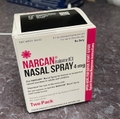Mitalipov: Mitochondrial replacement technique using spindle transfer (2009)
OHSU offers select multimedia assets for use by news outlets. (Commercial use is prohibited without prior written consent.)
When using these materials, please:
-
Credit photos and video with “OHSU/Photographer name.” Photographer name, caption and usage restrictions are embedded in the image metadata. Do not alter the content/nature of the photo. Color correction and cropping are allowed.
-
Audio and video clips should be credited to OHSU.
For more information, please contact OHSU Strategic Communications at news@ohsu.edu or 503-494-8231.

Dr. Mitalipov sound bites
Soundbites with Dr. Shoukhrat Mitalipov talking about his work to combat mitochondrial disease, with b-roll of laboratory procedures and monkeys. 2014 (OHSU)

Interview with Dr. Mitalipov and b-roll of laboratory procedures and monkeys
Soundbites with Dr. Shoukhrat Mitalipov talking about his work to combat mitochondrial disease, with b-roll of laboratory procedures and monkeys. 2014 (OHSU)

Dr. Mitalipov talks about his 2013 embryonic stem cell breakthrough
Scientists at Oregon Health & Science University and the Oregon National Primate Research Center (ONPRC) have successfully reprogrammed human skin cells to become embryonic stem cells capable of transforming into any other cell type in the body. It is believed that stem cell therapies hold the promise of replacing cells damaged through injury or illness. Diseases or conditions that might be treated through stem cell therapy include Parkinson's disease, multiple sclerosis, cardiac disease and spinal cord injuries. (OHSU)

Mito and Tracker
“Mito” and “Tracker” (in reference to the procedure used for imaging of mitochondria), the world’s first animals derived by spindle transfer. (OHSU)

Gene therapy graphic
The nuclear DNA from a patient’s egg carrying mitochondrial DNA mutations is removed and transplanted into an egg donated by a healthy donor which has also had its nuclear DNA removed. The reconstructed egg cell (oocyte) is then fertilized with the partner's sperm and an embryo is transferred to a patient. The baby will be free of risk from maternal mitochondrial mutations, but yet the biological child of the parents. (OHSU)
- Latest Stories
- Popular




